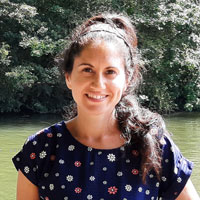With so many editorial services out there, it can be daunting for new writers to know what kind of services they should seek, and when. Here’s a brief overview of the four main types of editing you’ll most likely need when preparing your fiction or nonfiction manuscript for publication.
Developmental editing
Big-picture and chapter-level
At the top of the editing pyramid sits developmental editing (also called structural, content, or substantive editing), which is the most complex and time-consuming type of editing. It looks at the big-picture aspects of your book, such as plot, setting, descriptions, characters, and pacing. Editors are primarily interested in the content and structure of the book and point out what works and what doesn’t. Suggestions for revision may involve the author having to cut significant portions in the manuscript or rewrite certain parts. Most editors will provide you with a revision letter along with comments and annotations in the text for you to revise. If you’re interested in this type of editing, check out my page.
Line editing
Paragraph and sentence-level
Also called stylistic editing, line editing involves examining texts line by line, correcting sentences for clarity and flow – in short, anything that concerns the “style” and flow of a manuscript. It differs from copyediting in that it doesn’t focus on grammar and syntax but on meaning. At the paragraph level, line editing aims to preserve the author’s voice and tone. It looks closely at sentences’ lengths, adjectives and adverbs, transitions, and the rhythm of sentences on the page.
Copyediting
Sentence-level
The third stage of editing is copyediting. It looks at the grammar, syntax, inconsistencies, and continuity problems. It aims to improve the overall quality of the manuscript and to correct errors. In addition to fixing punctuation and spelling errors, the copy editor also addresses small details that may have changed and crept in over the course of the book with the help of a “Style Cheat”. For example, if Alice’s eyes are blue in the first chapter but have turned brown in the fifth chapter, they’ll point it out or fix it. Or if a character’s name is spelled “Sean” in the first few chapters and has somehow become “Shaun” in the middle of the book, they’ll correct it. Editors are often also responsible for fact-checking (such as spelling of names and places, or citations in nonfiction) in the manuscript.
Proofreading
Sentence-level
Proofreading comes last in the editorial process, meaning that it’s the last line of defense against any spelling or grammatical errors before the book is published. While most mistakes should have been eliminated by this point, proofreaders are responsible for finding and correcting those that remain in the manuscript and ensure it is as flawless as possible (remember, no book will ever be 100% perfect).
In conclusion, make sure you know what type of editing you’re looking for before you hire an editor, and if you’re not sure, don’t hesitate to ask.





